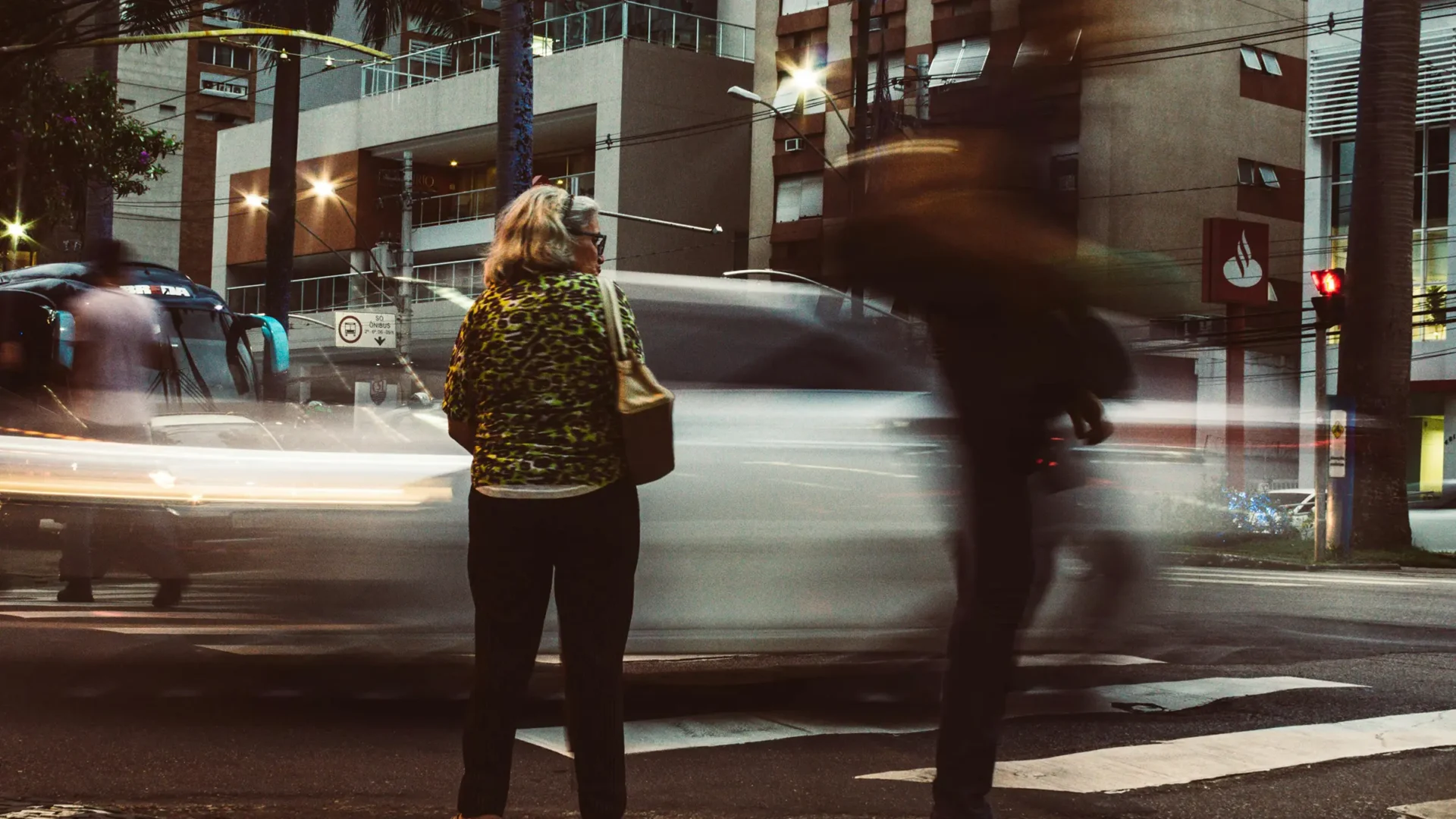Time
The duration of time in which experience design scenes take place.
When people complete activities, time is a factor beyond their control. Time is a constant, always moving. Depending on the setting, time can feel like it is moving faster or slower, and this relativity of time can impact how people carry out activities in experience design scenes.
For example, let’s consider a person who wakes up late for work. In this scene, the time between when they wake up and arrive at work is less than the time they usually take to complete their activities. The person feels pressure because they cannot finish everything before work with the time left. So, people typically make choices. They eat a breakfast bar instead of a bowl of oatmeal. They skip a 20-minute workout. They rush their kids out of bed and out the door and forget to grab lunch. Limited time may cause the person to be more pointed with a bus driver or drive erratically. Not everyone rushes to arrive on time when they run late—some recognize that they will be late to work, perform their normal activities, and accept the consequences. When time is short, most people experience pressure.
When people have “extra” time and perceive that time is bountiful, they may be more likely to notice details in the settings around them. They may also take time to make small talk with others. A perceived abundance of time can facilitate thinking about a person’s future, the meaning of life, or other existential questions.
Time is a constraint that frames activities. It defines what can be completed in a specific amount of time. It compresses activities when time is short. When designers consider time’s role in experience design scenes, they can create products, services, and systems that work within and leverage these constraints to facilitate intended outcomes.
Examples of Time
- 15 minutes left till sunset
- The remaining time to complete a quiz
- Three months to file paperwork for a driver’s license
- 8 months until birth
- All day to relax
- One week of vacation
- 30-minute lunch break
Researching Time
Designers discover constraints when they research matters related to time. This research can focus on the person by studying how much time they typically take to complete an activity. Research can also start with a product, service, or system to examine how much time is required to use each object effectively. Research into the time aspect can also reveal discoveries and opportunities for design. For example, researchers may find that people wish they had more time for certain activities or that they respond negatively when pressed for time. These discoveries can help designers create outcomes that help people have more time for other activities or help people better cope with time limits.
Questions to Ask About Time
- How does the setting frame time usage and limitations?
- How do people cope with time limits?
- How long do activities take to complete?
- How effectively is time being used in this setting?
- What could people do with their time in this setting that would be more beneficial?
Look for These When Researching Time
- Activities that are rushed or slowed down because of the setting
- Ways people respond to time constraints
- What people do with their time when they have an abundance
Sources
Design
Pschetz, L., & Bastian, M. (2018). Temporal Design: Rethinking time in design. Design Studies, 56, 169–184. https://doi.org/10.1016/j.destud.2017.10.007
Humanities
Chu, L., & Carstensen, L. (2022). Revisiting the role of perceived time horizons in socioemotional selectivity theory. In Innovation in Aging (Vol. 6, Issue Supplement 1, pp. 188–188). https://doi.org/10.1093/geroni/igac059.750
Zimmerman, D. W. (2005). The A-Theory of Time, The B-Theory of Time, and “Taking Tense Seriously.” Dialectica, 59(4), 401–457. https://doi.org/10.1111/j.1746-8361.2005.01041.x
Formal Science
Meadows, D. H. (2008). Thinking in Systems: A Primer. White River Junction, VT: Chelsea Green Publishing.
Social Science
Carstensen, L. L., Isaacowitz, D. M., & Charles, S. T. (1999). Taking time seriously: A theory of socioemotional selectivity. The American Psychologist, 54(3), 165–181. https://doi.org/10.1037/0003-066X.54.3.165
Sonnentag, S., Arbeus, H., Mahn, C., & Fritz, C. (2014). Exhaustion and lack of psychological detachment from work during off-job time: moderator effects of time pressure and leisure experiences. Journal of Occupational Health Psychology, 19(2), 206–216. https://doi.org/10.1037/a0035760
